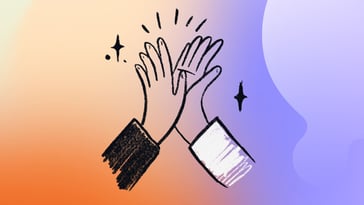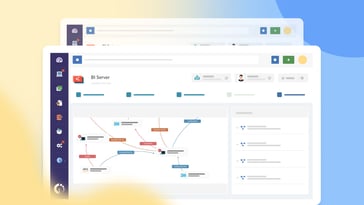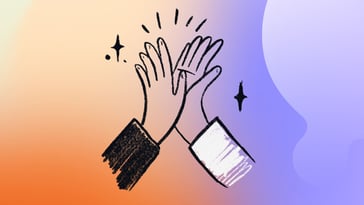ChatGPT took the world by storm at the end of January and revolutionized the use of Artificial Intelligence (AI) for creating content. But what is ChatGPT exactly?
In a nutshell, it’s a conversational AI model developed by OpenAI, an AI research lab based on natural language processing (NLP) and deep learning. It is designed to provide users with an easy and intuitive way to interact with an AI system in natural language.
Keep reading to discover what it can do, how it works, and how to use it.
What is ChatGPT?
ChatGPT is a state-of-the-art language model developed by OpenAI. The company is an American AI research laboratory founded in 2015 by Sam Altman, Reid Hoffman, Jessica Livingston, Elon Musk, Ilya Sutskever, Peter Thiel, and others.
ChatGPT was first released on November 30, 2022, but its stable release dates back to January 30, 2023.
It is a variant of OpenAI's Generative Pre-trained Transformer 3 (GPT-3) model, a massive NLP model with over 175 billion parameters. It is specifically designed to perform well on conversational NLP tasks, such as question-answering, text generation, and conversation management.
Unlike traditional rule-based chatbots, which rely on a predefined set of responses and decision trees, ChatGPT is capable of generating human-like responses in real-time by learning patterns and relationships in the data it is trained on.
How does ChatGPT work?
ChatGPT is based on the transformer architecture, a type of neural network designed for NLP tasks first introduced in 2017 – it has since become the dominant architecture for NLP models.
The key idea behind the transformer architecture is to use self-attention mechanisms, which allow the model to weigh the importance of different input words when making predictions. By doing so, the model can capture long-range dependencies and relationships between words. This capability is crucial to understand the meaning of a sentence.
In the case of ChatGPT, the model is pre-trained on a large corpus of text data that includes a variety of topics and styles of writing. During this pre-training process, the model learned to generate text similar to the input text it was trained on. Then, it was fine-tuned for specific NLP tasks, such as question-answering or conversation management, by training it on a smaller, task-specific dataset. This fine-tuning process allowed the model to adapt to the specific requirements of the task and achieve better performance.
ChatGPT vs. GPT-3: what’s the difference?
ChatGPT is a variant of OpenAI's GPT-3 model, but it is designed to perform well on conversational NLP tasks. The key difference between ChatGPT and GPT-3 is the type of data they are trained on and the specific NLP tasks they are designed to perform.
- GPT-3 is a general-purpose NLP model trained on a massive corpus of text data from the internet. It is capable of performing a wide range of NLP tasks, such as language translation, summarization, and text classification.
- ChatGPT is specifically designed for conversational NLP tasks. It is trained on a smaller corpus of conversational text data and fine-tuned for conversational NLP tasks.
What can ChatGPT do?
OpenAI’s chatbot is capable of performing a wide range of conversational NLP tasks, including:
- Question-answering: It can answer questions by finding relevant information in a large corpus of text data and generating an answer in natural language. This makes it a valuable tool for businesses looking to improve IT support tasks and Customer Service communications, as it can quickly and accurately answer common customer questions.
- Text generation: It can generate text based on a given prompt, making it useful for tasks such as chatbot development, content creation, and language translation.
- Conversation management: It can understand and respond to natural language input, making it a valuable tool for automating customer service interactions and improving the overall customer experience.
ChatGPT limitations
Though it might seem magical and perfect, there are several downsides to using ChatGPT, especially for professionals and businesses.
First and most importantly, it isn't always right. It can fail at basic math, struggle to answer logic questions, and even provide inaccurate information that sounds plausible but is incorrect. This lack of accuracy means it can't be relied upon for important tasks or decisions. Part of the reason is that it’s not connected to the internet, and the datasets are updated until summer 2021.
Another limitation of ChatGPT is its lack of human interaction. While it can hold conversations and provide information, it lacks the ability to provide personalized feedback or have meaningful conversations with people. This could lead to a lack of engagement and connection between users and the chatbot.
Finally, it has been criticized for its ethical uses or misuses. Since it has the potential to be used in unethical ways, such as creating fake news stories or spreading false information, the widespread use of an AI detector has become a necessary counterbalance. Both users and developers should be cautious with the way the tool is used.
How to Use ChatGPT
There are several ways to use ChatGPT, depending on your needs and technical expertise. Here are a few options:
- API: OpenAI offers an API that allows developers to access the full capabilities of ChatGPT and build custom applications that use the model. This is the most flexible and powerful option, as it allows developers to build custom applications and integrate ChatGPT into existing systems.
- Pre-built applications: OpenAI also offers pre-built applications that use ChatGPT, including a chatbot builder and a language generation tool. These applications are easy to use and require no technical expertise, making them a great option for businesses and individuals looking to automate tasks quickly and easily.
- Colab Notebooks: OpenAI provides free access to Colab Notebooks that allow you to experiment with and fine-tune ChatGPT for specific NLP tasks. This is a great option for researchers and developers who want to gain a deeper understanding of the model and how it works.
If you just want to see how it works, you can easily create an account to test it. Just follow these steps:
- Go to OpenAI’s website.
- Click the "Try" option.
- Create an account by inputting your name, phone number, and email address.
- Write a prompt in the "Query box," press “Enter,” and that’s it!
Final thoughts
ChatGPT is here to stay. It has undoubtedly boosted the AI content generation field by presenting an innovative way to build texts based on conversational premises.
The bright side is that it can create a wide range of content and help you to avoid the blank page. Plus, it’s free (for now), and its interface is pretty simple. However, it also has some downsides. Two of the most relevant ones are that it can be inaccurate, and has reliability problems due to the amount of traffic the website receives daily.
Nevertheless, ChatGPT is a powerful tool that can help you and your business. Just keep in mind what your goals are when choosing between ChatGPT or one of its alternatives.
Frequently Asked Questions
Who created ChatGPT?
It was created by OpenAI, an American AI research laboratory founded in 2015 by Sam Altman, Reid Hoffman, Jessica Livingston, Elon Musk, Ilya Sutskever, Peter Thiel, and others.
Can ChatGPT write essays?
Yes. If prompted right, ChatGPT has the power to write essays. However, it will need humans to detect whether the information featured in the essay is accurate.
Does ChatGPT save data?
OpenAI's chatbot collects data to improve the model and uses conversations for trainers. For that reason, the company encourages users not to share sensitive information in conversations. You can delete your account by clicking here.
How to save ChatGPT conversation?
ChatGPT saves conversations automatically. You can access them from the toolbar on the left, behind the option to create a new chat.
How much will ChatGPT cost?
There isn’t any information on the future price of the tool. The test version is free, and the company is considering creating a Premium plan to monetize it.
Does ChatGPT have a word limit?
Even though there’s no official word limit, users report that they experienced ChatGPT stopping after a certain amount of words.
How many users does ChatGPT have?
The analytics firm Similarweb estimates that ChatGPT reached 100 million monthly active users in January.
Why is ChatGPT down?
ChatGPT outages respond to the fact that the tool is at a test stage, and due to high volumes of traffic, it can be down from time to time.















